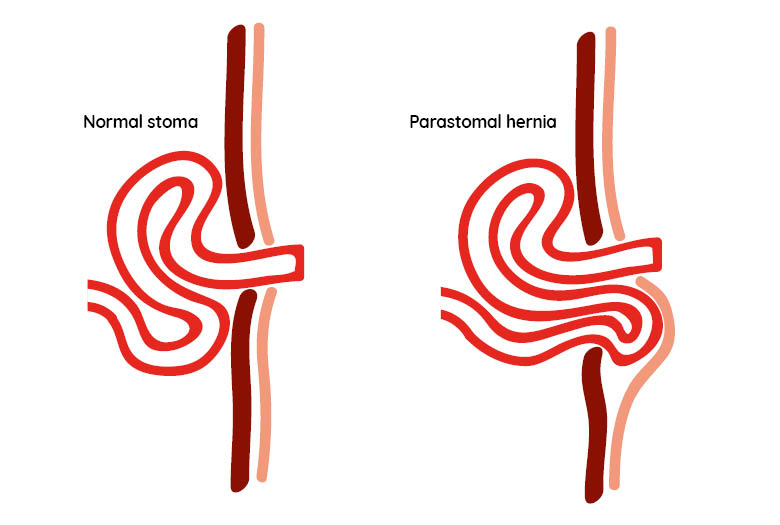Sport, exercise and physical activity can have major benefits for our physical and mental health, but it can be a challenge to get started. This is especially true for people who have recently had a stoma formed. However, with persistence and patience, as well as support from health professionals and fellow ostomates, it is possible to take up or get back into a fulfilling and physically active lifestyle.
Barriers to overcome
When people have a stoma formed, they may be more reluctant than before to take up or get back into sport. It’s understandable to be apprehensive about having trouble with a stoma bag, such as a messy leak, loud wind or an unpleasant odour, especially in a public setting, such as a sporting event.1 Then, engaging in rigorous physical activity presents a few extra challenges for a person with a stoma. You may have to think more about hydration, fluid balance and nutrition. You will have to choose the most appropriate pouch to stay securely adhered around your stoma, as well as decide how frequently and where to change that pouch. Then, there is the need to pick quality functional sportswear and effective support garments. This last point is particularly important, as the most significant safety concern for sport with a stoma can be the risk of developing a parastomal hernia.2
Many advantages
Despite these challenges, more and more people with a stoma are living very physically active lives and engaging in all manner of sports and outdoor activities. Social media has done a lot to increase awareness of the accessibility and benefits of this kind of lifestyle.
There are many advantages of an active life. When done safely, exercise helps manage bodyweight and develop strong core muscles. These are not only good things in their own right, but they may actually reduce the risk of parastomal hernia.
As well as the physical benefits, participating in sports and outdoor activities can improve our mental health. Exercise has been shown to reduce stress and anxiety and raise personal confidence. For someone with a stoma, taking part in sport can be a way to regain a ‘normal’ life and a sense of personal identity. As for anyone else, competing as part of a team, with another individual or against your own personal best can deliver a great sense of achievement.3
Useful equipment
The safety, security and comfort of wearing an ostomy pouch during intense activity has been greatly improved by a growing range of stoma care products available. Research, design and innovation have improved the pouches and accessories and given users a much wider range of options to choose from.
Finding the right pouching system and accessories is an essential part of the recovery process after surgery. Every stoma is different, and there is no one-size-fits-all solution to managing one. It can take time and focus to find the combination of pouches and accessories that give the best results. Having the right system is in place can be a major confidence boost that makes it much easier to return to previous activities, such as sport. You can ask your stoma care nurse to find you a range of appropriate products to try and help you make the best choice.

Support garments and abdominal exercises may reduce the risk of a parastomal hernia
Sound advice
Before undertaking intense exercise after surgery, you should speak with your specialist stoma care nurse. They can advise you about any potential risks and the appropriate precautions to take.4 They should be able to give you the best hernia prevention advice, following guidelines from the Association of Stoma Care Nurses (ASCN) UK.5
Helpful and trustworthy information is also available from reputable charities and patient groups. For example, the Colostomy Association (CA) has reprinted its patient booklet Active Ostomates, which contains helpful advice for those wishing to participate in or return to exercise following stoma surgery. You can order a copy directly from the Colostomy Association at www.colostomyuk.org/active-ostomates.
Social media groups can be a source of valuable peer support. For example, the Ostomy Lifestyle Athletes Facebook group (www.facebook.com/ostomylifestyleathletes) ‘provides a place for sporting ostomates to share thoughts, ideas, tips, challenges and inspiration for being fit and active after stoma surgery’. These groups allow ostomates to answer each other’s questions and share their sporting gains and successes, which can be a source of advice and motivation. However, it is always worth being wary of healthcare advice from strangers on the internet, and you should speak with a qualified health professional about anything that you’ve read and would like to try out.
Sporting stories
Personal stories of those who have persevered and succeeded can be an invaluable source of inspiration and advice for those who want to build up their strength and regain an active life. This article is followed by two more in the ‘Sport with a stoma’ series, each from the perspective of an athlete, sharing the challenges they overcame in managing their stoma in high-level physical endurance sport. The first is by Caroline Bramwell, an author and public speaker with an ileostomy, who describes competing in Triathlon and Ironman events. The second is by Aneica Duffy, a nursing student with a stoma who tells us about her journey from surgery to playing Camogie. These stories should provide insights into the challenges faced by these individuals and how they were overcome.
Sources
1. Neuman HB, Park J, Fuzesi S, Temple LK. Rectal cancer patients’ quality of life with a temporary stoma: shifting perspectives. Dis Colon Rectum. 2012; 55(11):1117–1124.
2. Russell S. Physical activity and exercise after stoma surgery: overcoming the barriers. Br J Nurs. 2017; 26(5):20–26
3. Burke S, Wurz A, Bradshaw A, Saunders S, West MA, Brunet J. Physical activity and quality of life in cancer survivors: a meta-synthesis of qualitative research. Cancers. 2017; 5:53
4. Varma S. A healthy lifestyle for the ostomist in relation to exercise. Br J Nurs. 2009; 18(S17):S18–S22
5. Association of Stoma Care Nurses. ASCN stoma care national clinical guidelines. 2016. www.magonlinelibrary.com/doi/full/10.12968/bjon.2017.26.22.S6
Conor Hamilton is a lecturer in adult nursing at Queen’s University Belfast


